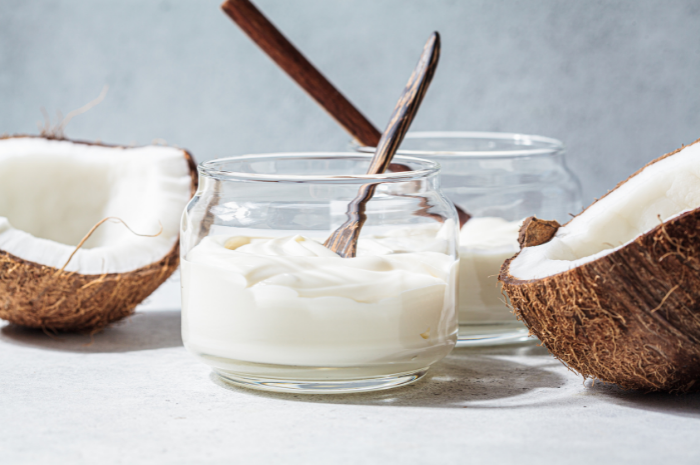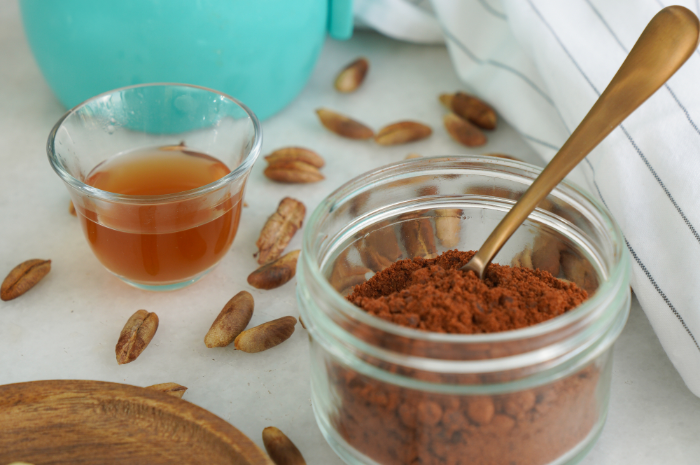Download your FREE ebook!
How to Make Coconut Yogurt at Home
Jump To Recipe




Electric oven: Turn the oven light on but no heat. If it’s winter or very cold where you live, you can turn the oven on just for a short while and then turn it off.
How to Gas Oven: Turn the pilot light on. As for the electric oven, if you are in a cold climate you can warm up the oven for a short while and then turn it off.

How to Make Coconut Yogurt at Home
Ingredients:
2 cans full-fat coconut milk, preferably organic
2 probiotic capsules
1/2 teaspoon honey (optional)
Instructions:
1. Sterilize a large glass jar or glass bowl by washing and covering with boiling water. Dry well.
2. Add the coconut milk to your chosen vessel, and add the probiotic and mix well. Add the honey. If using.
3. Place in your oven with the gas/pilot light on or a dehydrator at 110F (45C) for 12-24 hours, until the coconut will have curdled and taste like yogurt.
Notes:
If there’s any pink or gray color appearing on the yogurt while it ferments, that means it has been contaminated with bad bacteria and you need to throw it away. Make sure to always sterilize the jar or container you will use. And start using only 1 can of coconut milk before moving on to make a bigger batch.






Leave A Comment